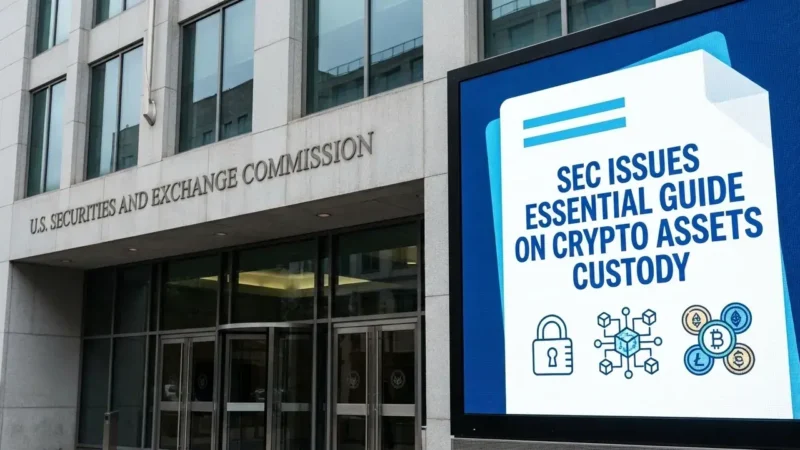The Urgent Call to Action for Ethereum’s Fusaka Upgrade

The Ethereum community is at a critical juncture, facing a delicate balance between immediate priorities and ambitious long-term goals. At the heart of this discussion is the Fusaka upgrade, a crucial hard fork designed to enhance the network’s scalability, efficiency, and security. Recently, Tomasz K. Stańczak, co-executive director of the Ethereum Foundation, issued a stark warning: the community’s growing excitement and focus on the future Glamsterdam upgrade, scheduled for early 2026, risks distracting from the more pressing and immediate task of completing the Fusaka upgrade planned for the fourth quarter of 2025.
The Strategic Importance of the Fusaka Upgrade
The Fusaka upgrade is not just another incremental update; it is a major leap forward in Ethereum’s evolution, building on the foundations of previous hard forks like the Dencun and Pectra upgrades. It is a combined fork of two major components: Fulu (Consensus Layer) and Osaka (Execution Layer). The upgrade is slated to introduce several significant technical enhancements that will redefine how Ethereum handles scalability and state management.
The upgrade’s centerpiece is the implementation of Peer-to-Peer Data Availability Sampling (PeerDAS). This innovation will fundamentally change how Ethereum nodes verify transactions, allowing them to confirm the availability of data by sampling small chunks rather than downloading and storing entire datasets. This approach will dramatically increase the network’s data throughput, paving the way for Layer 2 rollups to handle a higher volume of transactions at significantly reduced costs. By making Layer 2 solutions more efficient, the Fusaka upgrade is a key step toward achieving Ethereum’s long-term vision of becoming a global, scalable platform for decentralized applications.
Another cornerstone of the upgrade is the integration of Verkle trees. This new data structure will replace the existing Merkle Patricia Trie, leading to much smaller and more efficient proofs for verifying network state. This change will reduce the storage burden on nodes and make it easier to run light clients, thereby boosting the network’s decentralization and making it more accessible to a wider range of users, including those on mobile devices.
Furthermore, the Fusaka upgrade includes a series of Ethereum Improvement Proposals (EIPs) aimed at enhancing the Ethereum Virtual Machine (EVM) and improving smart contract functionality. These improvements are essential for creating a more robust and developer-friendly environment, encouraging the creation of more complex and secure decentralized applications (dApps).
Navigating Coordination Challenges and Timelines
Ethereum’s history is marked by a series of complex, multi-stakeholder upgrades, and the Fusaka upgrade is no exception to the timeline challenges. Recent core developer calls have revealed delays in consensus-client releases, which could push key milestones into late September. This tightens the timeline for deploying the upgrade on the mainnet before the Devconnect event in November, leaving little room for error.
In response, the Ethereum Foundation has taken decisive action, reorganizing its research and development teams to improve coordination across various groups. This strategic move aims to reduce communication gaps and accelerate decision-making, ensuring that the development process remains on track. It is a recognition that for a project of this scale, seamless collaboration and disciplined execution are as crucial as the technical innovations themselves.
The Balancing Act for Client Teams
Client teams, responsible for the various software implementations of the Ethereum protocol, face a particularly complex task. They must balance ongoing work on reliability and performance improvements with the intense preparation required for the Fusaka upgrade. This includes updating their infrastructure and conducting extensive testing to ensure a smooth and secure transition. The reorganization by the Ethereum Foundation is designed to provide these teams with the focus and support they need to succeed in this demanding environment.
The Clear Message: Execution Over Aspiration
Stańczak’s message is a pragmatic reminder that consistent coordination and meeting deadlines are paramount. He has recommended reducing the number of calls dedicated to future forks to allow teams to concentrate fully on delivering the public testnets and final release for the Fusaka upgrade. His point is clear: no matter how exciting the long-term roadmap is, the network’s credibility and the community’s trust hinge on the ability to execute on current commitments.
Stay informed, read the latest crypto news in real time!
This renewed emphasis on execution and delivery by the Ethereum Foundation aims to ensure that the Fusaka upgrade launches on time, providing a solid foundation for future innovations. By staying disciplined and focused on the current priorities, Ethereum can continue to build trust among users and developers worldwide, strengthening its position as a leading blockchain platform that successfully balances innovation with stability, scalability, and security for years to come. The Fusaka upgrade represents a critical test of this commitment, and its success will be a powerful signal of Ethereum’s maturity and resilience.




